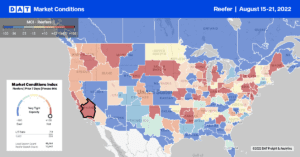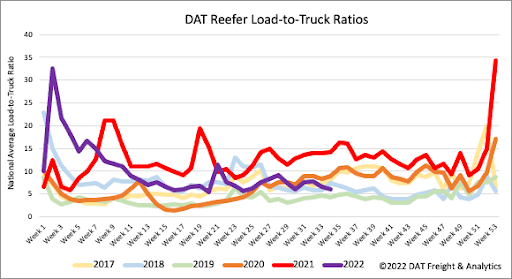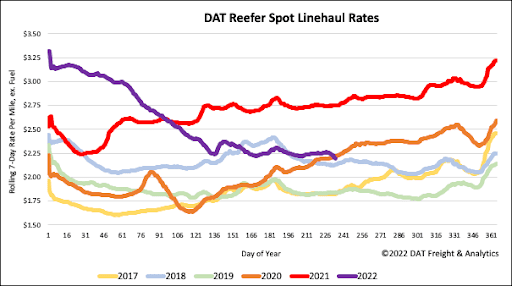As a measure of how dry this summer has been, the ordinarily green and lush Northeast Region is experiencing severe drought conditions for the first time in 20 years. According to the Drought Monitor, “of particular note is the introduction of extreme drought in eastern Massachusetts outside Cape Cod and much of southern and eastern Rhode Island. These areas have received near or less than half of average rainfall over the last three months and only about 50 to 65 percent of normal in the previous half-year, which is 9 to 11 inches less than average.”
In other regions, 60% of the American West, Southwest, and Central Plains are also experiencing extreme drought conditions. The 17 states in these three areas are vital to the U.S. agricultural sector, supporting nearly half of the nation’s $364 billion production by value. According to the American Farm Bureau Federation (AFBF), this includes 74% of beef cattle, responsible (in total) for 18% of U.S. agricultural production by value; 50% of dairy production, responsible (in total) for 11% of U.S. agricultural production by value, over 80% of wheat production by value and over 70% of vegetable, fruit and tree nut production by value.
Farmers and ranchers across the country’s western half continue to battle severe drought conditions. In a recent AFBF survey, 64% of respondents rated a reduction in harvest yields due to drought as prevalent or higher in their area, and 42% rated the intention to switch planned crops for the growing season due to drought as prevalent or higher (up from 37% last year). Notably, those who reported tilling under crops because of drought jumped from only 24% of respondents last year to 37% this year. Similarly, 33% of respondents reported destroying and removing orchard trees and other multiyear crops as prevalent or higher, up from only 17% last year.

All rates cited below exclude fuel surcharges unless otherwise noted.
Onion and potato growers in the Pacific Northwest (PNW) will start shipping onions and potatoes from packing facilities in Idaho and Washington this week. Even though produce volumes are down 9% y/y as the PNW shipping season gets underway, reefer rates for all outbound loads of apples, cherries, and peaches averaged $3.34/mile last week or about $0.25/mile higher than the same week in 2021. Spot rates from Yakima Valley to Los Angeles at $1.57/mile are $0.41/mile higher than last month and typically increase through year-end along with shipping volumes which peak in late November/December.
Loads from Yakima Valley 2,500 miles southeast to Atlanta were flat last week at $1.85/mile, up $0.20/mile to Philadelphia, and up $0.07/mile to Hunts Point, NY. Produce season in Michigan is ramping up, and even though volumes are down 15% y/y, peak shipping season typically occurs throughout September. Reefer spot rates from Saginaw, MI, to Brooklyn, NY, averaged $3.66/mile last week, which is around $0.45/mile lower than the previous year but $0.65/mile higher than the June average.

Reefer load posts are almost identical to 2017 and 2018 levels, and about half of what was recorded this time last year following last week’s 6% w/w decrease. Carrier equipment posts are at their highest level recorded in August, including being 10% above 2019 levels. Lower load posts and higher equipment posts pushed the reefer load-to-truck (LTR) ratio down slightly to 6.00.

Following three weeks of successive gains, reefer linehaul rates decreased $0.02/mile last week to a national average of $2.24/mile. At that level, spot rates are $0.55/mile lower than the same week in 2021 and now $0.02/mile lower than in 2020. For context, reefer linehaul rates are still $0.32/mile higher than the pre-pandemic average for this time of the year.


